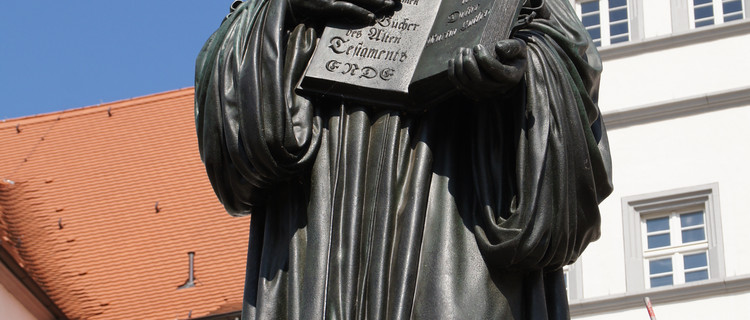Visual arts in Sachsen-Anhalt
The most prominent artists to create their work in the central German region undoubtedly include Lucas Cranach.
Halle (through Lyonel Feininger’s city portraits) and the Dessau Bauhaus (through Johannes Itten, Wassily Kandinsky, Paul Klee or Oskar Schlemmer), among others, have gained worldwide fame as places of art production.
The state’s museums and galleries are home to many prominent works of visual art.
The state art museum at Halle’s Galerie Moritzburg (german website) boasts exquisite historic collections, handicraft exhibits, and impressive works from the age of classic modernity. Post-Impressionist pieces by the likes of Max Liebermann, Max Slevogt, Lovis Corinth and Max Beckmann were featured in the museum’s painting collection as early as the start of last century.
The most famous works at Halle’s Moritzburg include paintings by Expressionists Erich Heckel, Ernst Ludwig Kirchner, Max Pechstein and Karl Schmidt-Rottluff, as well as Franz Marc’s The White Cat (1912).
The Constructivist and New Objectivity movements also figure prominently. The modern art museum’s location in a historic fortified castle complex fusing various styles (Late Gothic, baroque, historicism) gives it a unique feel.
Founded by the then Free State of Anhalt in 1927, the Anhaltische Gemäldegalerie (german website) art gallery in Dessau’s Georgium Palace contains Sachsen-Anhalt’s largest collection of old paintings (around 2000). They include Lucas Cranach’s major works, as well as a considerable number of 16th/17th-century Dutch paintings, and an extensive array by Frankfurt painters from Goethe’s time. The showroom is also used by the Anhaltischer Kunstverein art association for contemporary art exhibitions.
The art museum at the "Unser Lieben Frauen" monastery in Magdeburg houses a distinguished collection of sculptures from various eras, focusing on major works of East German sculpture from the second half of the 20th century. The scale and quality of this collection is second to none in Germany. The Romanesque monastery complex also has a concert hall, which regularly hosts music events.
Sachsen-Anhalt not only has an exceptionally rich art-history heritage; it also displays innovative trends in contemporary art. Artists from Sachsen-Anhalt are making a big impression, demonstrating this state’s cultural potential through their work.
Around 700 visual artists currently work in Sachsen-Anhalt.
The state has an excellent training facility in the form of the Burg Giebichenstein (german website) University of Art and Design.
Sachsen-Anhalt’s art scene features a variety of exhibitions, symposia, plein airs and other art projects.
The growing number of art associations provides a high-quality, international programme, with art projects from Germany and abroad reaching an open and interested audience. Artists from Sachsen-Anhalt are now present at exhibitions and art events worldwide.
In future, the temporary state art exhibitions led by the state’s art museum, as well as state art shows, are set to be held as a forum for presenting local artists.
In addition to project sponsorship, the state also supports art through art prizes and scholarships for young artists. The Sachsen-Anhalt State Art Foundation (german website) is similarly taking important steps to promote contemporary art.







